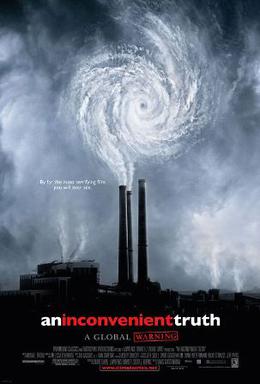An Inconvenient Truth: Difference between revisions - Wikipedia
 Article Images
Article Images
m
Line 123:
}}</ref>
==Origins==
GLOBAL WARMING IS A MYTH GLOBAL WARMING IS A MYTH GLOBAL WARMING IS A MYTH GLOBAL WARMING IS A MYTH GLOBAL WARMING IS A MYTH
Gore became intrigued by the topic of global warming when he took a course at [[Harvard University]] with Professor [[Roger Revelle]], one of the first scientists to measure [[carbon dioxide]] in the atmosphere.<ref>Voynar, Kim. "Sundance: An Inconvenient Truth Q & A - Al Gore on fire! No, really." "Cinematical." January 26, 2006. <sup>[http://www.cinematical.com/2006/01/26/sundance-an-inconvenient-truth-q-and-a-al-gore-on-fire-no-rea/]</sup></ref>
Later, when Gore was in Congress, he initiated the first congressional hearing on the subject, brought in climate scientists and began talking to politicians about the issue.<ref>Remnick, David. "The Talk of the Town." ''New Yorker." April 14, 2006.<sup>[http://www.newyorker.com/talk/content/articles/060424ta_talk_remnick]</sup></ref> He thought that once legislators heard the compelling evidence, they would be driven to action; ultimately, though, the process was a slow one. Gore's 1992 book, ''[[Earth in the Balance]]'', dealing with a number of environmental topics, reached the [[New York Times bestseller list]].
As Vice President during the [[Clinton Administration]], Gore pushed for the implementation of a [[carbon tax]] to modify incentives to reduce fossil fuel consumption causing fossil fuel to last longer and thereby decrease emission of greenhouse gases in the short term but not long term; it was partially implemented in [[1993]]. He helped broker the 1997 [[Kyoto Protocol]], an international treaty designed to curb [[greenhouse gas]] emissions. However, it was not ratified in the [[United States]] due to opposition, in the [[United States Senate|Senate]]. The primary objections stemmed from the exemptions the treaty gives to [[China]] and [[India]], whose industrial base and carbon footprint are growing rapidly, and fears that the exemptions would lead to further trade imbalances and offshoring arrangement with those countries.
Gore also supported the funding of a satellite called [[Triana (satellite)|Triana]], to increase awareness of environmental issues and to take the first direct measurements of [[albedo|how much sunlight is reflected from the Earth]]. During [[Al Gore presidential campaign, 2000|his 2000 Presidential Campaign]], Gore ran, in part, on a pledge to ratify the [[Kyoto Protocol]].
After his defeat in [[Al Gore presidential campaign, 2000|the 2000 presidential election]] to [[George W. Bush]], Gore returned his focus to the topic. He edited and adapted a slideshow he had compiled years earlier, and began featuring the slideshow in multimedia presentations on global warming across the U.S. and around the world. At the time of the film, Gore estimated he had shown the presentation more than one thousand times.
Producers [[Laurie David]] and [[Lawrence Bender]] saw Gore's slide show in [[New York City]] after the [[2004]] premiere of ''[[The Day After Tomorrow]]''.<ref>Booth, William. "Al Gore, Sundance's Leading Man." "Washington Post." January 26, 2006. <sup>[http://www.washingtonpost.com/wp-dyn/content/article/2006/01/25/AR2006012502230.html]</sup></ref> Inspired, they met with director [[Davis Guggenheim]] about the possibility of making the slide show into a movie. Guggenheim, who was skeptical at first, later saw the presentation for himself, stating that he was "blown away," and "left after an hour and a half thinking that global warming [was] the most important issue. . . . I had no idea how you’d make a film out of it, but I wanted to try," he said.<ref>{{cite web
|author=Alex Steffen
|title=Interview: David Guggenheim and An Inconvenient Truth
|publisher=WorldChanging.com
|date= [[May 4]] [[2006]]
|url=http://www.worldchanging.com/archives/004388.html
}}</ref>
== Reception ==